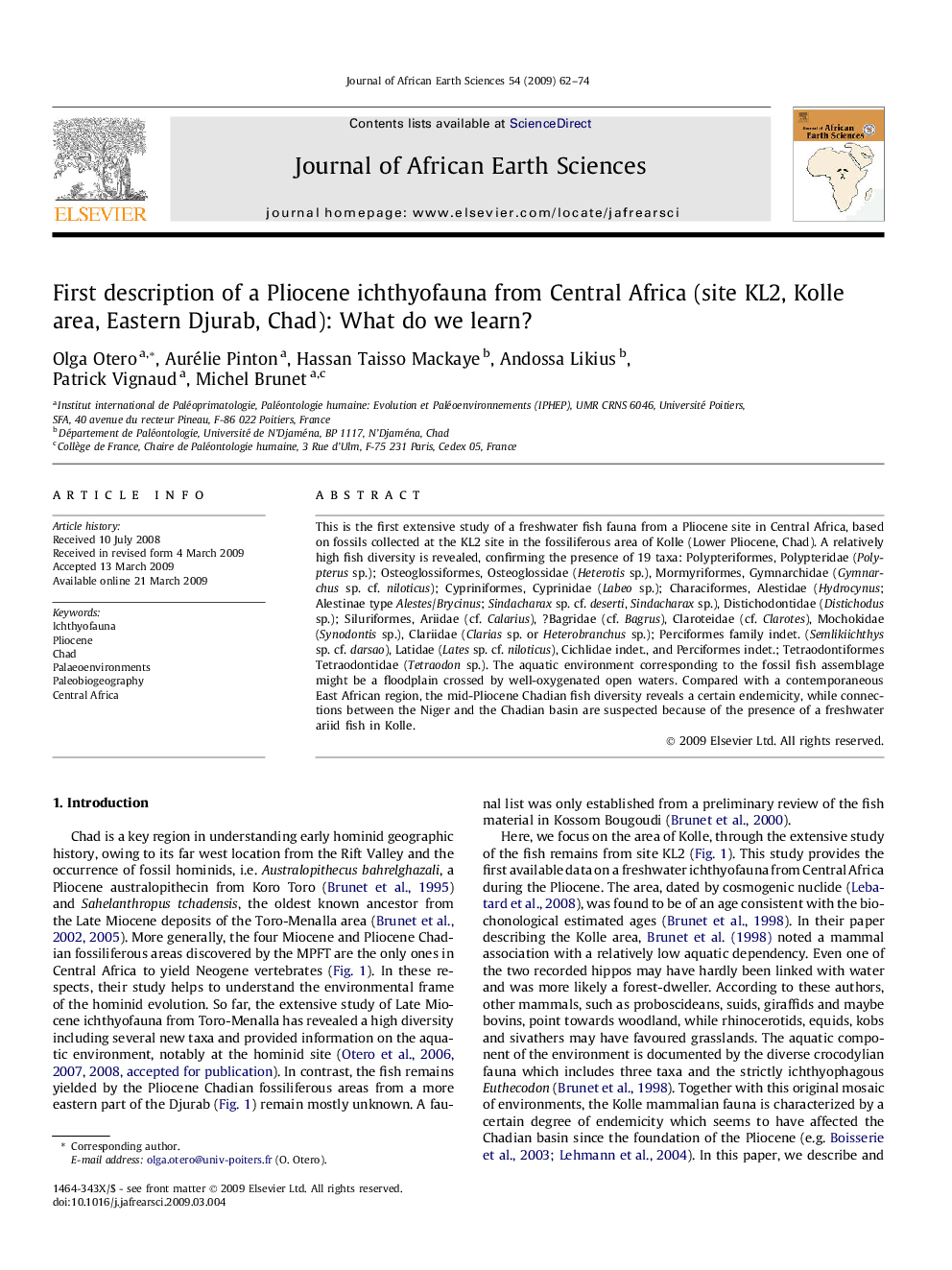| Article ID | Journal | Published Year | Pages | File Type |
|---|---|---|---|---|
| 4729449 | Journal of African Earth Sciences | 2009 | 13 Pages |
This is the first extensive study of a freshwater fish fauna from a Pliocene site in Central Africa, based on fossils collected at the KL2 site in the fossiliferous area of Kolle (Lower Pliocene, Chad). A relatively high fish diversity is revealed, confirming the presence of 19 taxa: Polypteriformes, Polypteridae (Polypterus sp.); Osteoglossiformes, Osteoglossidae (Heterotis sp.), Mormyriformes, Gymnarchidae (Gymnarchus sp. cf. niloticus); Cypriniformes, Cyprinidae (Labeo sp.); Characiformes, Alestidae (Hydrocynus; Alestinae type Alestes/Brycinus; Sindacharax sp. cf. deserti, Sindacharax sp.), Distichodontidae (Distichodus sp.); Siluriformes, Ariidae (cf. Calarius), ?Bagridae (cf. Bagrus), Claroteidae (cf. Clarotes), Mochokidae (Synodontis sp.), Clariidae (Clarias sp. or Heterobranchus sp.); Perciformes family indet. (Semlikiichthys sp. cf. darsao), Latidae (Lates sp. cf. niloticus), Cichlidae indet., and Perciformes indet.; Tetraodontiformes Tetraodontidae (Tetraodon sp.). The aquatic environment corresponding to the fossil fish assemblage might be a floodplain crossed by well-oxygenated open waters. Compared with a contemporaneous East African region, the mid-Pliocene Chadian fish diversity reveals a certain endemicity, while connections between the Niger and the Chadian basin are suspected because of the presence of a freshwater ariid fish in Kolle.
